Table of Contents |
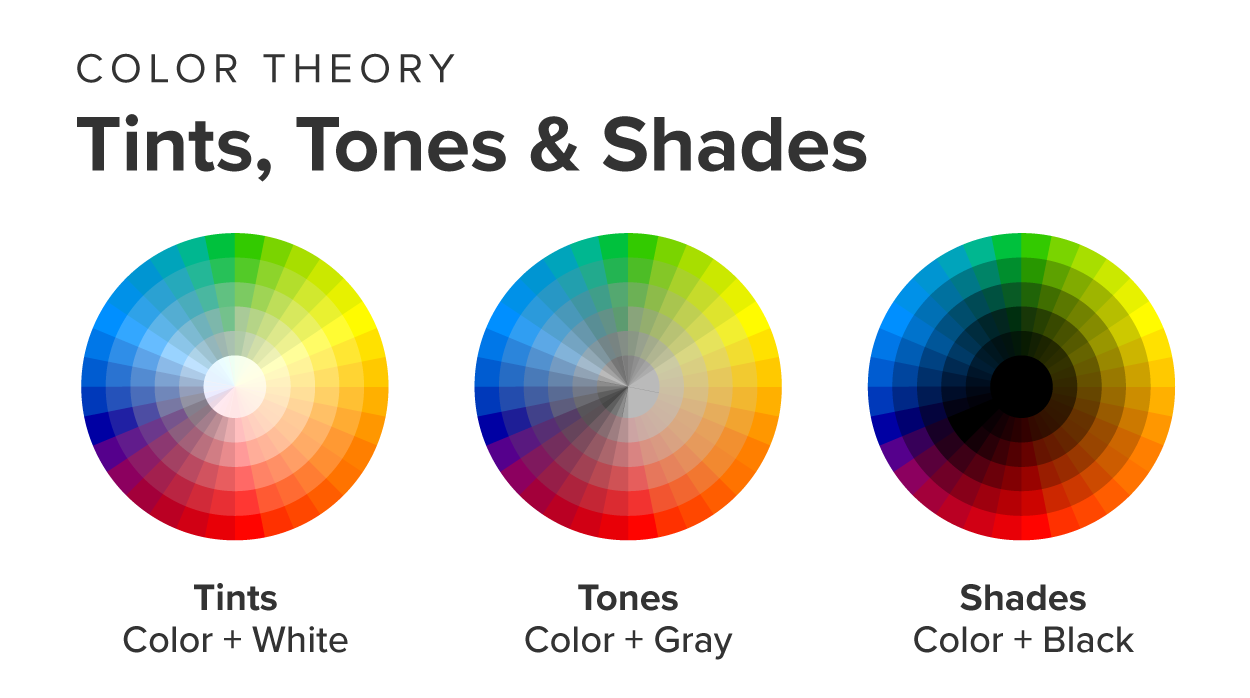
In the subtractive color system, a tint is a hue plus white, which lightens the value of a color. A classic example of this is red and pink. Because red is a primary color, it provides a good starting point. If white is added to a color like red, it becomes a tint of that color. So, pink is a tint of red.
The image below shows different variations of tints. Notice how the tints become lighter as the swatches work their way inward toward the center of the chart. This is because more white is being applied to the base hue in increments, resulting in lighter tints.
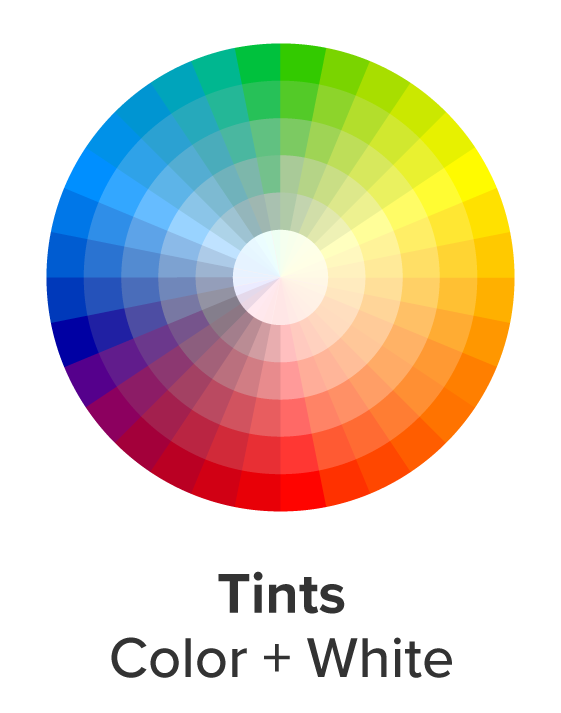
In the subtractive color system, a tone is a hue plus gray, which mutes the color.
The chart below illustrates how tones are used to mute color. Notice how the colors lose their intensity as the stages move closer to the center of the color wheel.
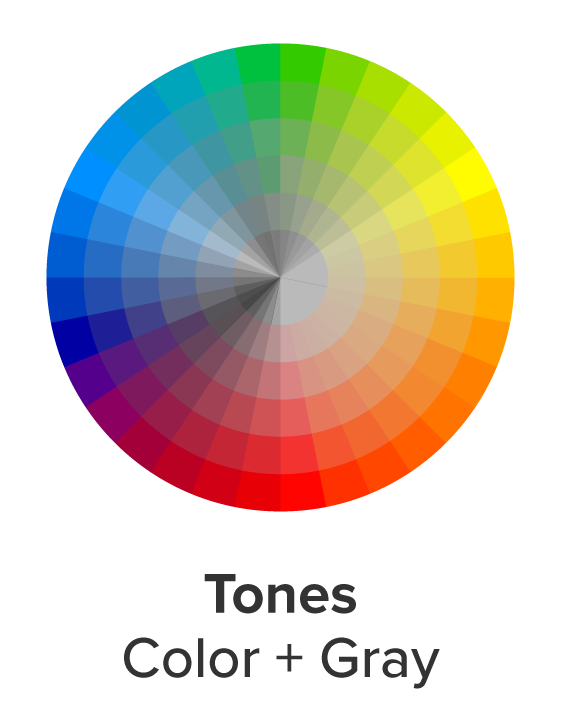
The colors begin to lose their vibrance as they progress toward gray. In fact, the term for creating tones by applying gray to a hue is sometimes called adding gray.
In the subtractive color system, a shade is a hue plus black, which darkens the value of a color. Shades and tints are opposites because one is created by adding different degrees of black and the other by the addition of white. Using red as an example, adding black to red darkens the value and creates maroon.
Below is an example of shades produced by adding black to the hues of a color wheel.
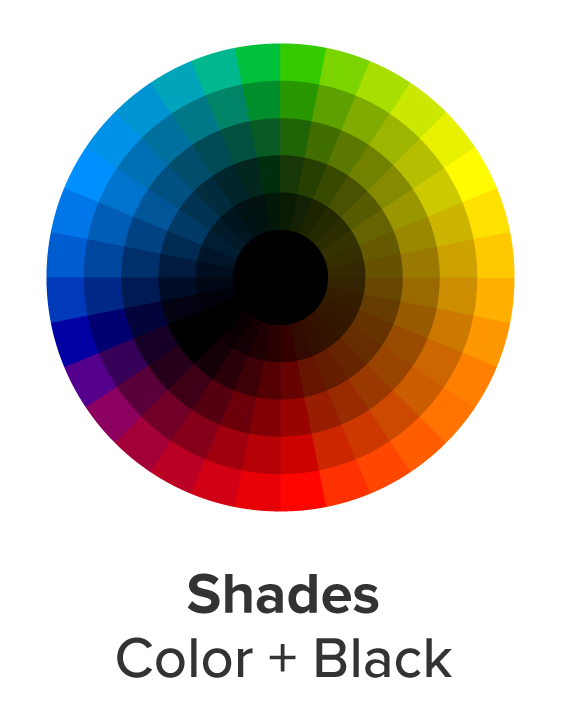
In this image, as you add black to the base colors, they get darker.
The other important color schemes are monochromatic and achromatic, the latter of which includes a grayscale.
Monochromatic is a color scheme based on just one hue plus its tints and shades.
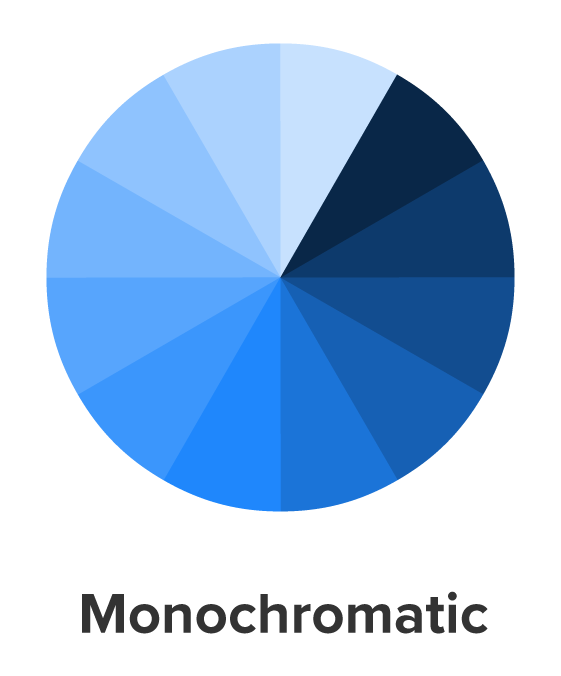
Monochromatic images are used in design and photography to create stylistic effects. In the image below, green and various tints and shades of the same hue are used to create a monochromatic composition of different geometric forms.

Monochromatic color schemes have advantages in print. In the newspaper industry, the application of color on newspaper pages is determined by the advertisements placed on the page. If a page doesn’t have a color advertisement, it usually runs in black and white. At times, advertisements will run with only one color, or spot color. Because black and white are generally not deemed colors, pages running with spot color can use monochromatic images because there is only one hue with tints and shades created by adding black and white.
When there's no discernible hue, this is called achromatic. At this point, the color is going through a scale of white to black, like a grayscale. A grayscale is a multi-step arrangement of swatches of achromatic grays. Each step in a grayscale represents an even progression in value from black to white.

Grayscale images are pervasive in graphic design and photography. In the image below, an owl is illustrated using only black and white and shades of gray. The result is a striking image in high contrast.

Source: THIS TUTORIAL WAS AUTHORED BY MARIO E. HERNANDEZ FOR SOPHIA LEARNING. PLEASE SEE OUR TERMS OF USE.